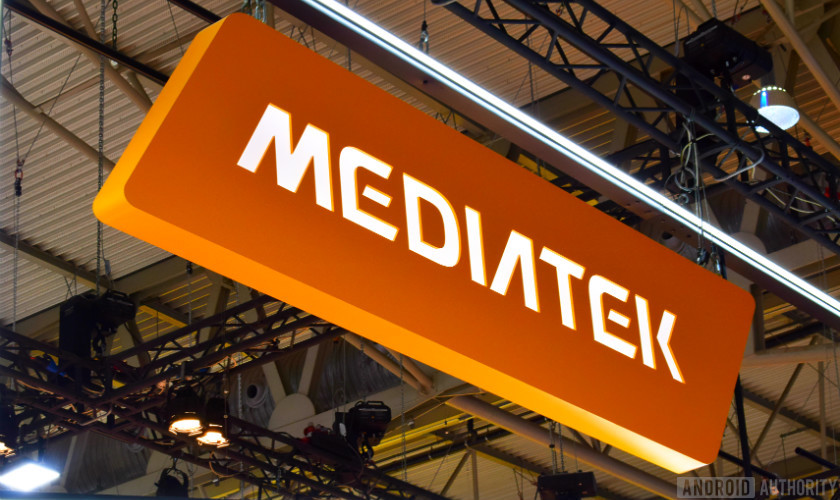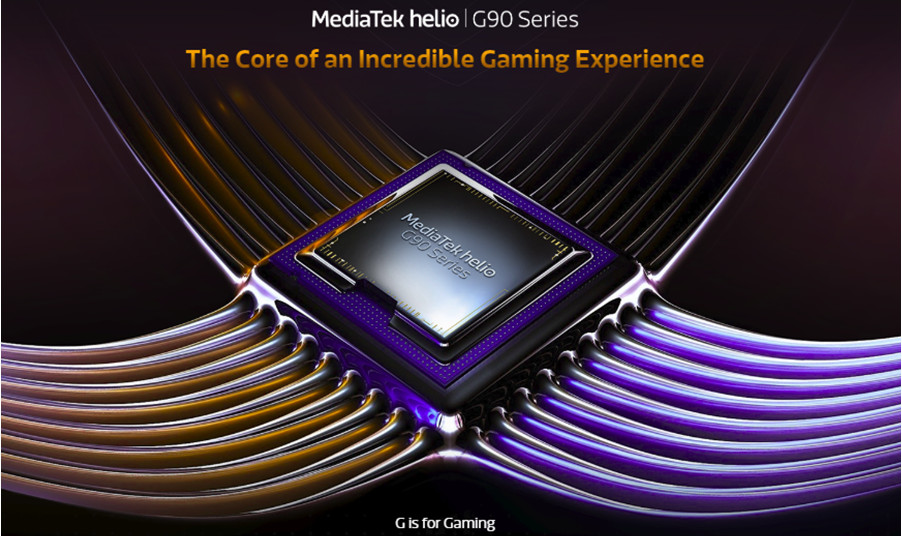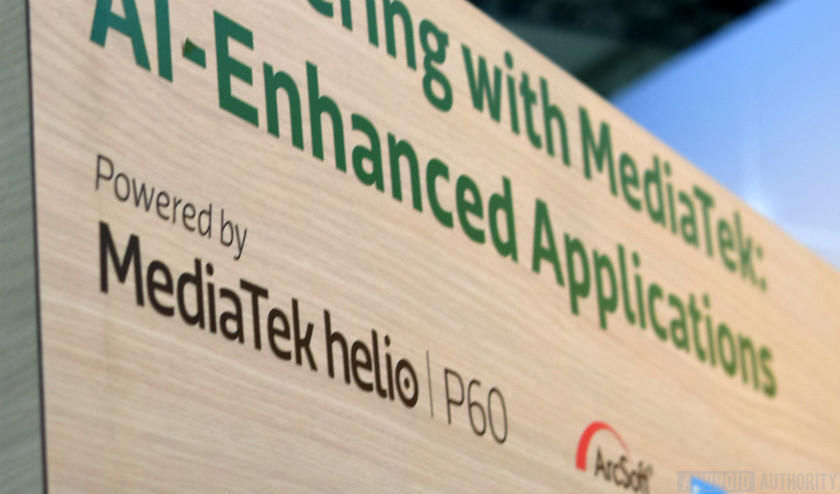Taiwan-based MediaTek traditionally plays second fiddle to silicon rival Qualcomm, but the company’s mobile chips are in scores of phones around the world. Figuring out the naming conventions and capabilities of these MediaTek processors can be a little daunting though.
Don’t fret though, as our MediaTek chipset guide tries to break things down for you. Read on for all the information you’ll need on MediaTek processors.
Premium: MediaTek 5G chipsets
MediaTek joined the 5G smartphone race in late 2019 when it took the wraps off the Dimensity 1000 processor. This marks the first flagship MediaTek chipset since 2017’s ill-fated Helio X series, and it’s the most recent one in this guide.
The chipset stands out from most other 5G processors by offered an integrated 5G modem, supporting sub-6Ghz networks and 5G+5G dual-SIM too. It doesn’t offer mmWave support though, which means it’s not ideal for some carriers in the US and Japan.
| MediaTek Dimensity 1000/1000L | MediaTek Dimensity 800 | |
|---|---|---|
| CPU | 4x Cortex-A77 4x Cortex-A55 |
4x Cortex-A76 4x Cortex-A55 |
| GPU | Arm Mali-G77 MP9 | Arm Mali-G77 MP4 |
| Modem | Helio M70 5G 4.7Gbps download, 2.5Gbps upload Sub-6Ghz |
Helio M70 5G 3.5Gbps download 1.25Gbps upload Sub-6Ghz |
| Camera | 80MP single 32MP+16MP dual |
64MP single 32MP+16MP dual |
| Machine learning | APU 3.0 six cores |
APU 3.0 four cores |
| Process | 7nm | 7nm |
The Dimensity 1000 is no slouch in most other areas though, offering a powerful octa-core CPU layout featuring four Cortex-A77 cores and four Cortex-A55 cores. And this setup means CPU performance should be in the same ballpark as the Snapdragon 865, and theoretically better than the Kirin 990.
MediaTek’s GPU is more modest though, featuring the same Mali-G77 graphics as the Samsung Exynos 990 seen in the Galaxy S20 series. However, the MediaTek silicon doesn’t have as many graphics cores as the Exynos chipset, which means it should be less powerful than Samsung’s GPU in theory.
The Dimensity 1000 seems to deliver a ton of CPU power, but we expect it to lose out to rivals in terms of graphics performance and some camera features.
MediaTek was the first chipset designer to bring dedicated machine learning silicon to the mid-tier, and it’s continuing the ML push with the Dimensity 1000. The new processor sports a six-core APU to better manage machine learning, divided into two heavy cores, three medium cores, and one light core.
Photography performance isn’t quite as impressive as the Snapdragon 865, but you’re still getting support for 80MP cameras (with multi-frame processing), five rear cameras, and 4K/60fps video. Don’t expect 8K recording or 108MP camera support just yet — a little disappointing when both Samsung and Qualcomm’s best silicon support these features.
Otherwise, the Dimensity 1000 also offers Bluetooth 5.1, Wi-Fi 6, 90Hz refresh rates at QHD+, 120Hz at FHD+, and support for Google’s AV1 codec. The flagship processor is also joined by the Dimensity 1000L, which differs from the main SoC by offering lower clock speeds, according to MediaTek.
This isn’t the only MediaTek 5G chipset though, as the firm also launched the Dimensity 800 earlier this year. The new processor is quite powerful on paper, featuring four Cortex-A76 CPU cores and four lightweight Cortex-A55 cores. This is a departure from arch-rival Qualcomm’s Snapdragon 765 series, which features two Cortex-A76 cores (plus six A55 cores).
Other noteworthy features include a Mali-G77 MP4 GPU, the Dimensity 1000’s Helio M70 5G modem (that means no mmWave), 90Hz support, a four-core APU for machine learning, and up to 64MP single-camera capture with multi-frame processing.
Unfortunately, MediaTek’s 5G processors haven’t seen the same level of adoption as Qualcomm’s 5G chipsets. That’s a real shame, especially when the Snapdragon 865 is reportedly more expensive than the Snapdragon 855 and Dimensity 1000. But hopefully more OEMs adopt the silicon as the price of Snapdragon 865 phones continues to stay high.
Notable phones
Mid-range
MediaTek’s bread and butter isn’t in flagships though, as it’s a major player in mid-range segments and below. But its mid-range segment has been shaken up somewhat thanks to the arrival of a new chipset family.
MediaTek Helio G
The MediaTek Helio G series is the newest family of chips in the brand’s arsenal, focusing on gaming and pure performance in general. All of these chips sport the firm’s HyperEngine technology for smoother gaming performance.
The Helio G90 and G90T were the first chips in the series and at the top of the totem pole, packing an octa-core CPU (two Cortex-A76 cores plus six Cortex-A55 cores) and Mali-G76 quad-core graphics. This means you can expect great system and gaming performance on paper.
| MediaTek Helio G90/T | MediaTek Helio G70/80 | |
|---|---|---|
| CPU | 2x Cortex-A76 6x Cortex-A55 |
2x Cortex-A75 6x Cortex-A55 |
| GPU | Mali-G76 3EEMC4 | Mali-G52 MC2 |
| AI | APU 2.0 | N/A |
| Camera | 64MP single 24MP+16MP dual |
48MP single 16MP+16MP dual |
| Connectivity | Cat-12 LTE Up to 1Gbps downlink |
Cat-7 LTE Up to 300Mbps downlink |
In fact, our own testing revealed that the G90T-equipped Redmi Note 8 Pro edged out the Snapdragon 730-toting Redmi K20 in benchmarks. So gamers on a budget and those on the hunt for a smooth experience in general should keep an eye on this processor.
Other Helio G90 series specs include 12nm designs, simultaneous 2.4Ghz/5Ghz WiFi connections, up to 10GB of RAM, 64MP camera support, and an APU for machine learning.
The firm also released the Helio G70 and G80 earlier this year, and while they’re not as powerful as the G90 series, they still seem to offer class-leading performance. The two processors offer octa-core CPUs (two Cortex-A75 cores and six Cortex-A55 cores), Mali-G52 MC2 graphics, and support for 48MP cameras.
Best of all, the G70 has found its way into the ~$100 Realme C3, making it quite possibly the most powerful phone at this price-tier. So those looking for a speedy experience in this price segment should definitely consider phones with the G70 or G80 processor.
Notable phones
- Xiaomi Redmi Note 8 Pro
- Realme 6
- Realme 6i
- Realme C3
Helio P series
MediaTek’s mid-range to budget tier Helio P series has been around for ages, dating back to 2016’s Helio P10. And the most capable members of this family right now are the Helio P90 and P95.
The P95 is essentially a mild upgrade to the P90 that we first saw at the end of 2018, and we really do stress the term “mild.” The two processors share the same octa-core CPU design (two Cortex-A75 and six Cortex-A55 cores), the same PowerVR GM 9446 GPU, and the same camera capabilities. In the case of the latter, that means 64MP sensor support, multi-frame noise reduction, and 4K recording.
In fact, the only major difference we can tell between the two chipsets is that the P95 now sports the company’s HyperEngine gaming enhancements. Either way, the processors also sport impressive machine learning hardware, such as an APU, and a dedicated AI Accelerator.
The Helio P65 is next on the totem-pole, and it’s really a cross between the P9X series and the Helio G70/G80. That means a relatively powerful octa-core CPU (two Cortex-A75 cores and six Cortex-A55 cores), budget-tier Mali-G52 MC2 graphics, Bluetooth 5, and 48MP camera support.
Probably the biggest downside, however, is that the processor lacks dedicated AI silicon. So machine learning tasks (e.g. image recognition, machine vision, face recognition/unlock) will consume more juice than on the previously mentioned SoCs.
| Helio P95 | Helio P90 | Helio P60/P70 | Helio P65 | |
|---|---|---|---|---|
| CPU | 2x Cortex-A75 6x Cortex-A55 |
2x Cortex-A75 6x Cortex-A55 |
4x Cortex-A73 4x Cortex-A53 |
2x Cortex-A75 6x Cortex-A55 |
| GPU | IMG PowerVR GM 9446 | IMG PowerVR GM 9446 | Mali-G72 MP3 | Arm Mali-G52 MC2 |
| Camera | 64MP single 24MP+16MP dual |
64MP single 24MP+16MP dual |
32MP single 24MP+16MP dual (P60) 20MP+16MP dual (P70) 48MP snapshot (P70) 16 + 20 MP dual |
48MP single 16MP+16MP dual |
| Machine learning | APU 2.0 | APU 2.0 | APU 1.0 | N/A |
| Process | 12nm | 12nm | 12nm | 12nm |
MediaTek’s P60 and P70 are older and a little less capable than the Helio P65 in many ways. These chips offer older CPU cores, the Mali-G72 MP3 GPU, and Bluetooth 4.2. Furthermore, the Helio P60 and P70 only have basic support for 48MP cameras, so you can’t expect multi-frame processing at this resolution.
The P60 and P70 have one ace up their sleeve though, and that’s dedicated AI silicon. So expect tasks like face unlock, AI-powered photography, and other ML-related activities to be more efficient here. As for specific differences between the P60 and P70, the P70 simply has slightly faster CPU and GPU clock speeds, as well as a slightly more efficient AI processor.
In any event, the P60 and P70 are older chips right now, so the Helio G90 and Helio P90 series should deliver smoother system and gaming performance.
Notable phones
- Motorola One Macro
- Nokia 5.1 Plus
- Oppo Reno 2Z
- Samsung Galaxy A41
MediaTek’s low-end processors
The Taiwanese silicon designer has a reputation for delivering low-end chips for entry-level phones. It’s slowed down in this regard over the years in favor of the mid-range segment, but it still has a notable presence at the ~$100 tier.
MediaTek’s most capable low-end chips are the Helio P35, Helio P22, and Helio A25. All three processors sport octa-core Cortex-A53 CPU cores (no heavy lifting here), PowerVR GE8320 graphics, and efficient, 12nm designs. Camera capabilities are pretty modest too, with none of the chipsets supporting more than 25MP shooters at best (nevermind 48MP).
| Helio P35 | Helio P22 | Helio A25 | Helio A22 | Helio A20 | |
|---|---|---|---|---|---|
| CPU | 8x Cortex-A53 | 8x Cortex-A53 | 8x Cortex-A53 | 4x Cortex-A53 | 4x Cortex-A53 |
| GPU | IMG PowerVR GE8320 | IMG PowerVR GE8320 | IMG PowerVR GE8320 | IMG PowerVR GE8320 | IMG PowerVR GE8300 |
| Camera | 25MP single 13MP+13MP dual |
21MP single 13MP+8MP dual |
16MP single 13MP+5MP dual |
21MP single 13MP+8MP dual |
16MP single 13MP+5MP dual |
| Process | 12nm | 12nm | 12nm | 12nm | 12nm |
Thought those processors were light on features and power? Then the Helio A22 and A20 might surprise you, cutting the CPU core count in half to just a quad-core Cortex-A53 setup. That means lag in system menus and the camera app isn’t out of the question at all.
These lowest of the low-end processors also offer similar entry-level PowerVR GPUs, display resolutions topping out at HD+, and modest camera credentials. But on the plus side, you’re getting Bluetooth 5 capabilities.
Notable phones
- Huawei Y6S
- Xiaomi Mi Play
- Motorola Moto E6 Plus
- Samsung Galaxy A10s
That’s about it for our MediaTek chipset guide! We’ll be updating this article periodically to add new chipsets from the Taiwanese silicon designer.
More posts about chipsets














